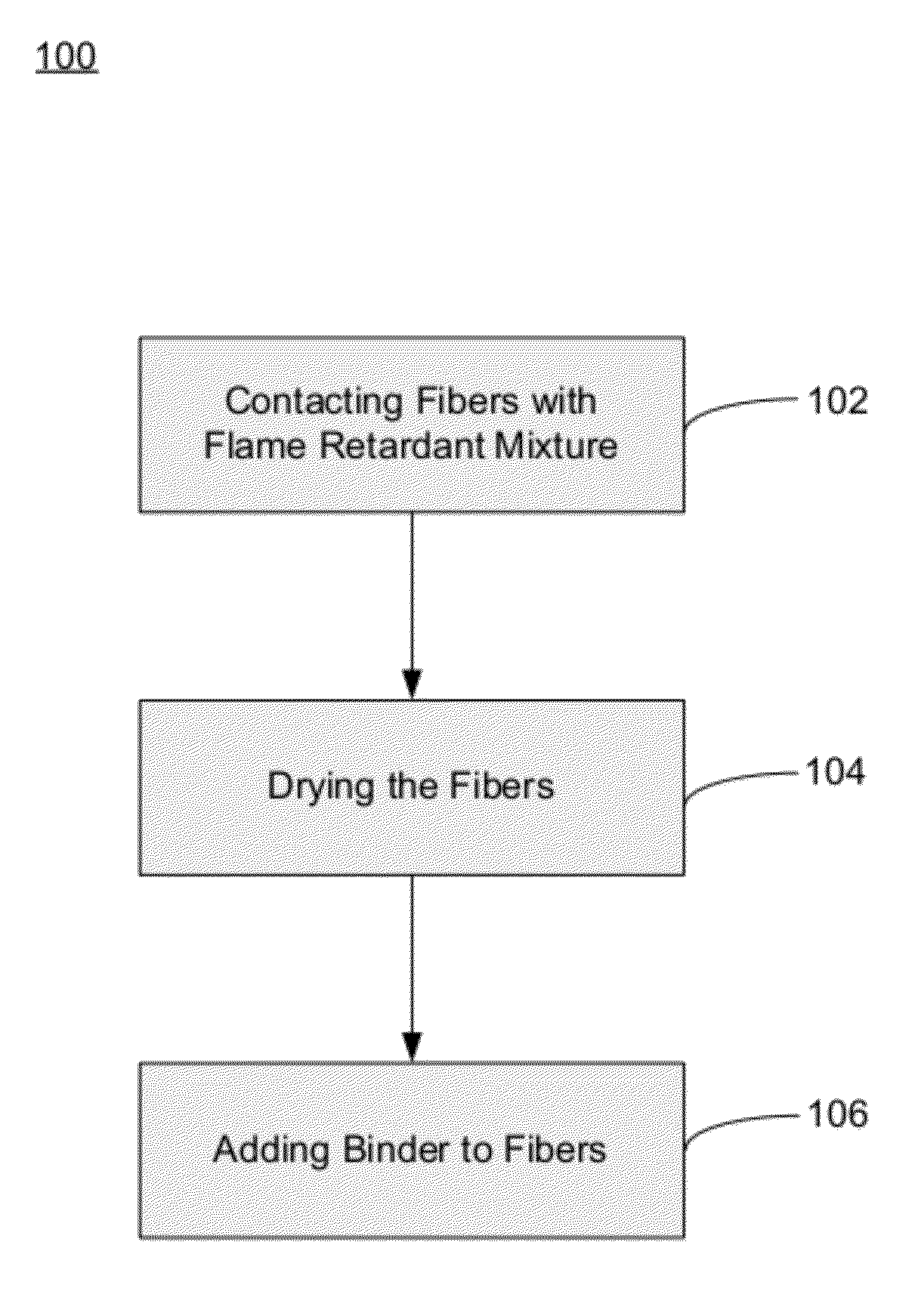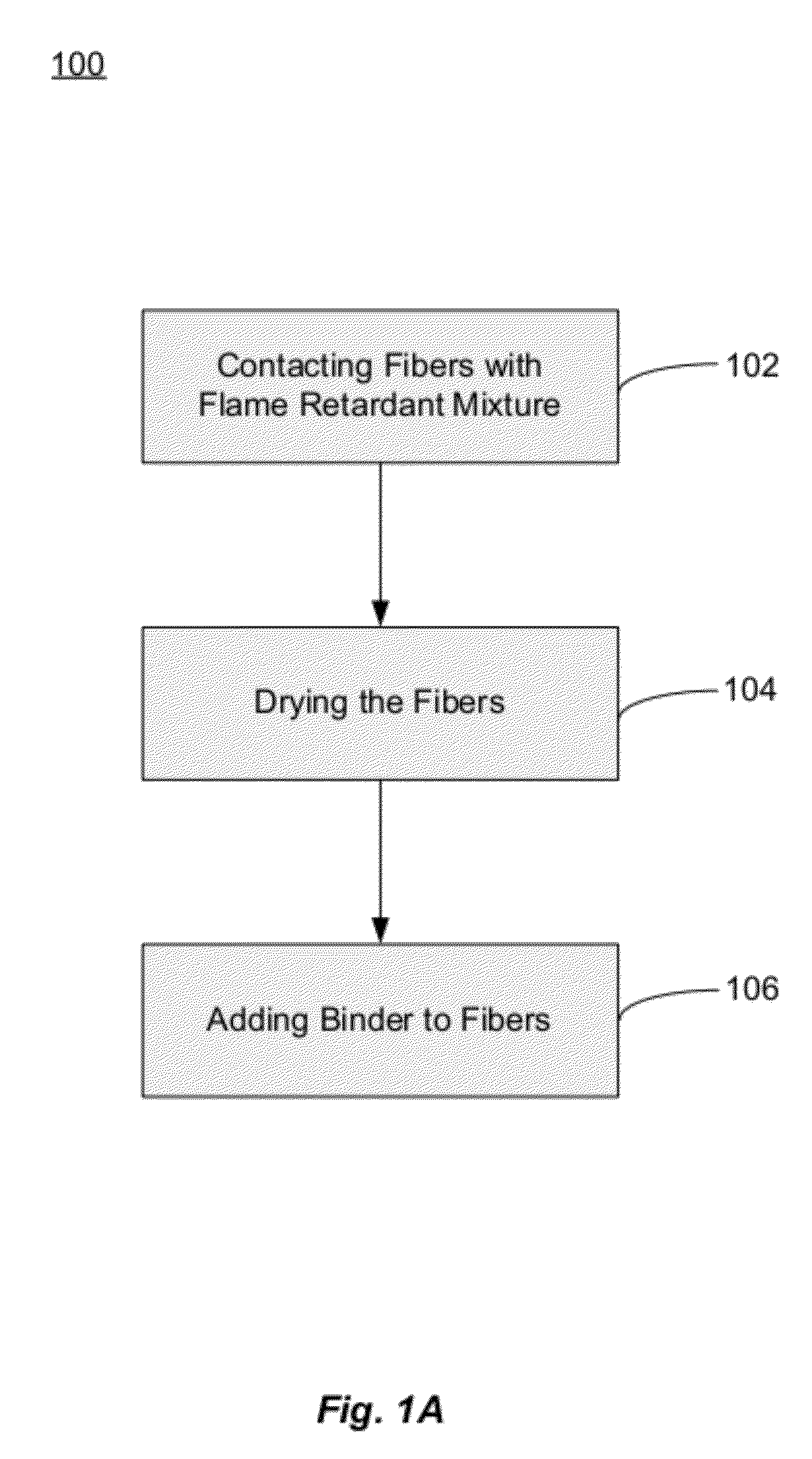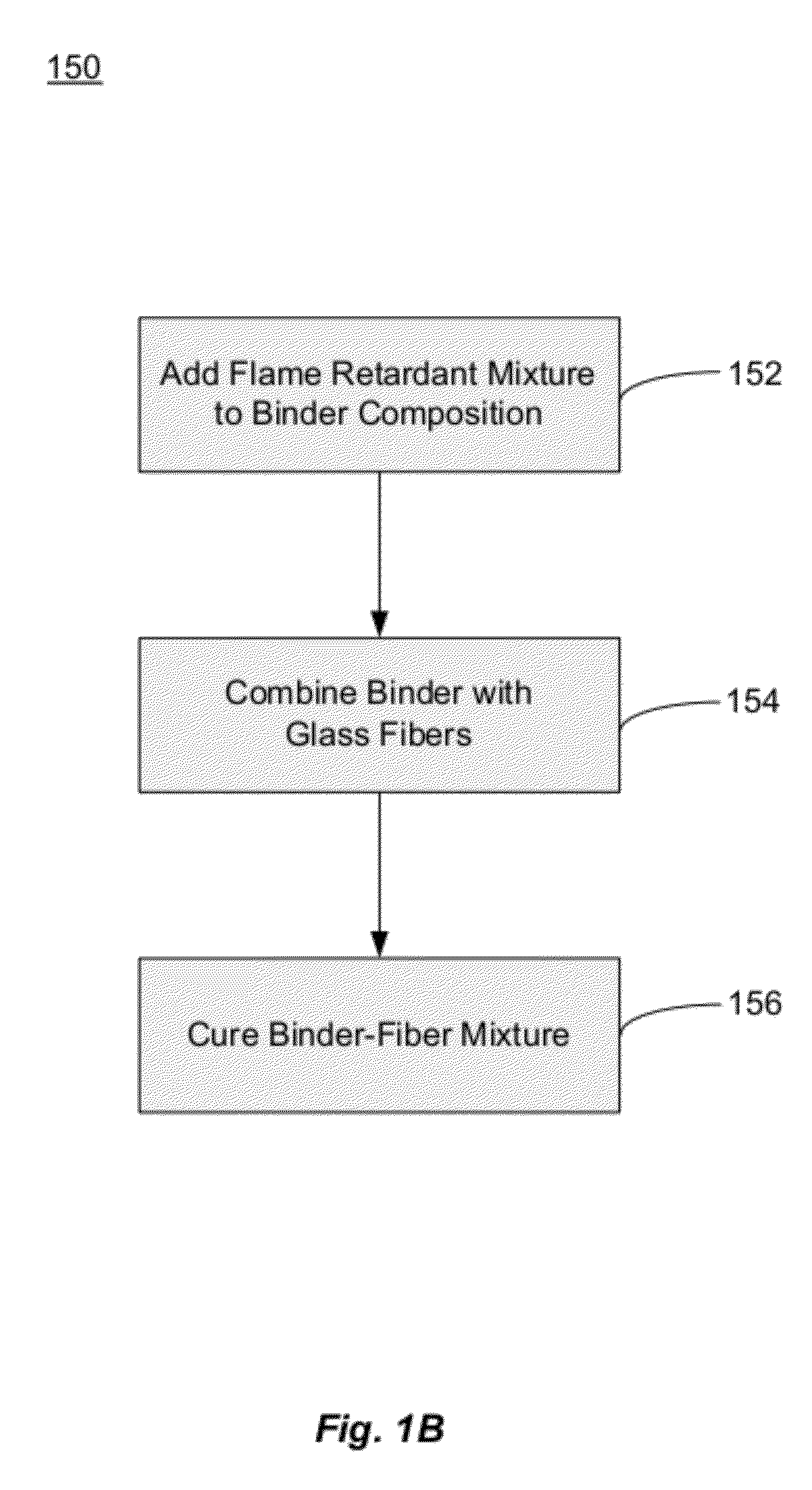Fiberglass composites with improved flame resistance from phosphorous-containing materials and methods of making the same
a technology of phosphorous-containing materials and fiberglass composites, which is applied in the field of fiberglass composites with improved flame resistance from phosphorous-containing materials and methods of making the same, to achieve the effect of increasing the flame resistance of fibers and slowing the melting of fibers
- Summary
- Abstract
- Description
- Claims
- Application Information
AI Technical Summary
Benefits of technology
Problems solved by technology
Method used
Image
Examples
experiment # 1
Experiment #1 Confirming the Formation of Char Around Glass Fibers Treated with an Organophosphorous Flame Retardant
[0062]FIG. 4 shows the condition of a 4 inch square sample of fiberglass insulation that was exposed to a Bunsen burner flame for 30 minutes. The left half of the same was treated with an organophosphorous flame retardant while the right half was not treated with any flame retardant. The figure shows the surface of the treated half of the insulation formed a layer of char that remained intact for the duration of the flame exposure. In contrast, the untreated half on the right showed some darkening (presumably from dehydrated binder) but no char formation. The untreated half also showed significant melting and pitting of the fiberglass that would indicate a failure of a standardized flame penetration test such as Underwriters' Laboratory Test 181 for flame penetration for fiberglass.
experiment # 2
Experiment #2 UL 181 Flame Penetration Tests for Treated and Untreated Fiberglass Insulation
[0063]A group of seven fiberglass samples (Samples A-G) were prepared for the UL 181 flame penetration test. Sample A was a control sample of fiberglass insulation that was not treated with a flame retardant, while samples B-G were treated with a variety of phosphorous containing flame retardants. For all the samples, fiberglass insulation with a low average area weight was used to increase the probability that a successful test was attributed to the flame retardant instead of the density of the glass fibers. Moreover, the samples were exposed to the UL 181 flame penetration furnace for up to 45 minutes instead of the standard 30 minutes to better differentiate the flame resistance characteristics of the treated samples. Table 1 shows the test results for Samples A-G:
TABLE 1UL 181 Flame Penetration Test Results of Ducts Coated withFiberglass InsulationAverageAverageFlameFiberglassCoatingAvera...
PUM
| Property | Measurement | Unit |
|---|---|---|
| wt. % | aaaaa | aaaaa |
| diameter | aaaaa | aaaaa |
| diameter | aaaaa | aaaaa |
Abstract
Description
Claims
Application Information
 Login to View More
Login to View More - R&D
- Intellectual Property
- Life Sciences
- Materials
- Tech Scout
- Unparalleled Data Quality
- Higher Quality Content
- 60% Fewer Hallucinations
Browse by: Latest US Patents, China's latest patents, Technical Efficacy Thesaurus, Application Domain, Technology Topic, Popular Technical Reports.
© 2025 PatSnap. All rights reserved.Legal|Privacy policy|Modern Slavery Act Transparency Statement|Sitemap|About US| Contact US: help@patsnap.com



